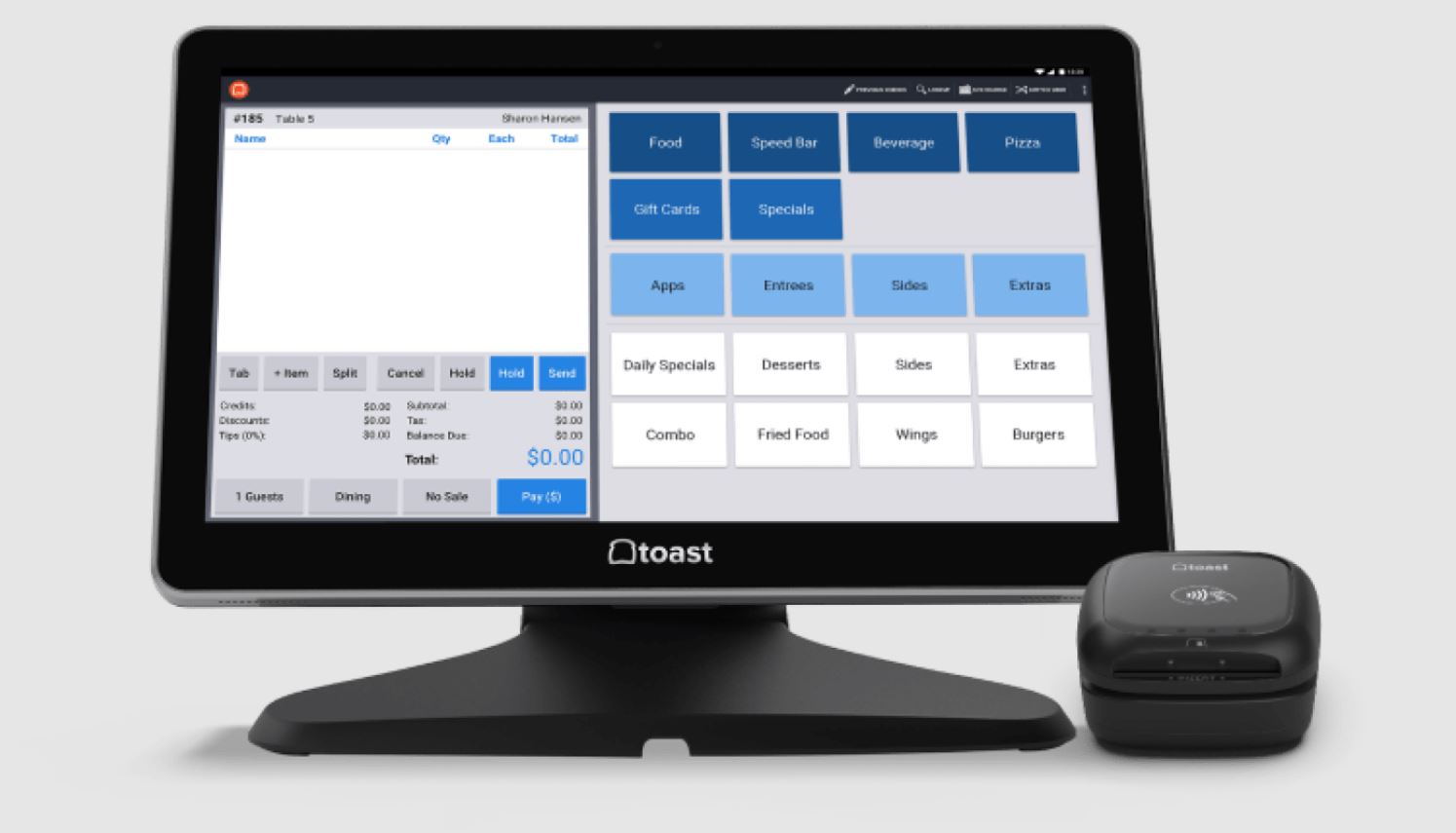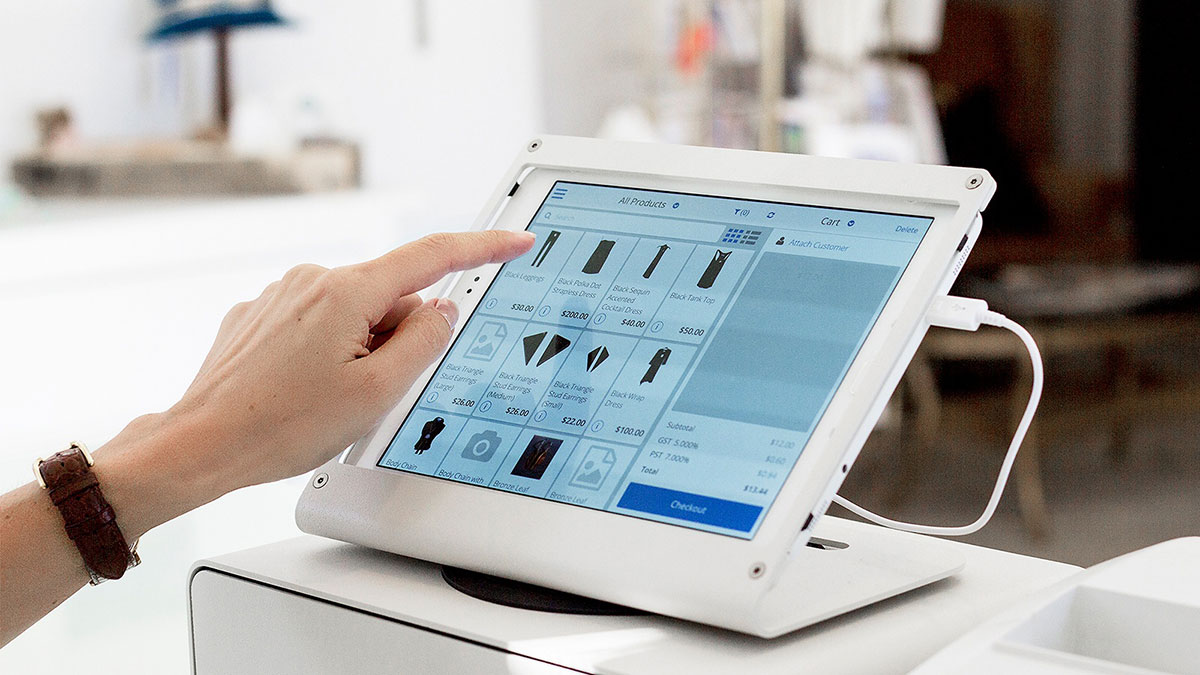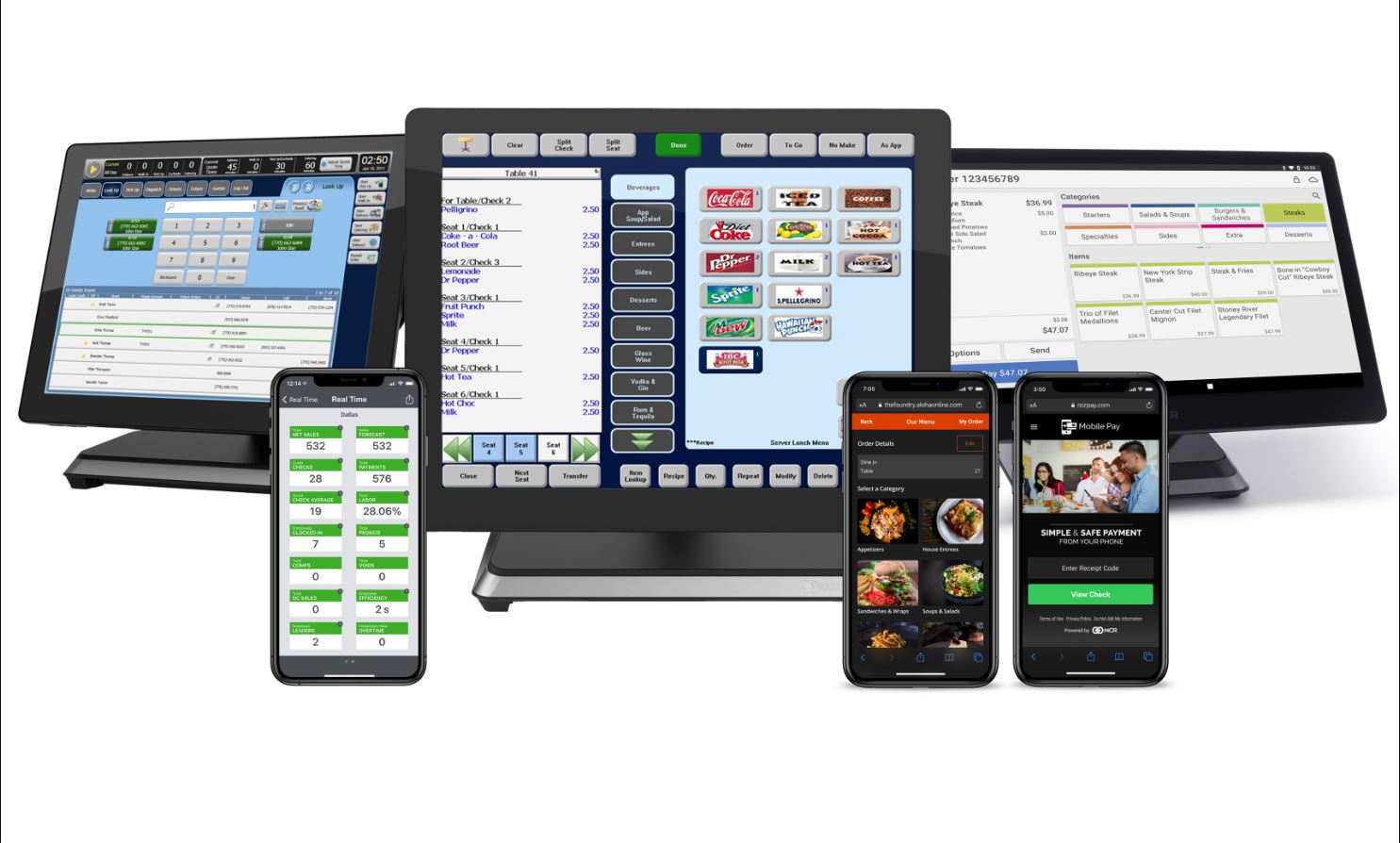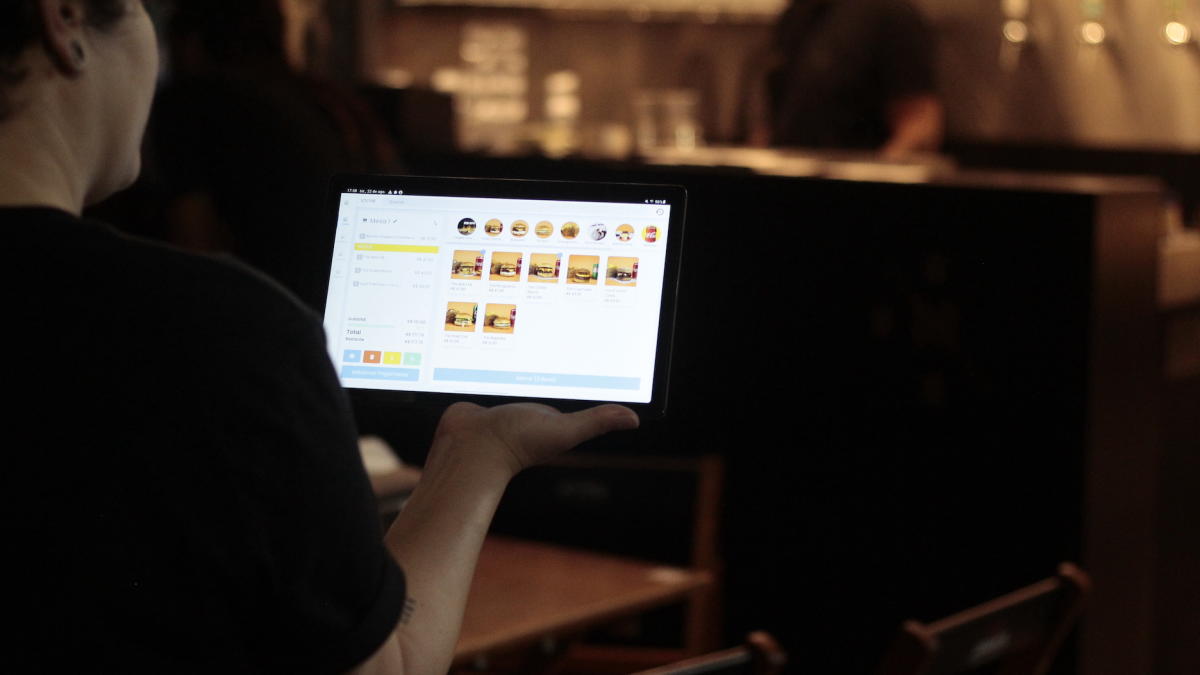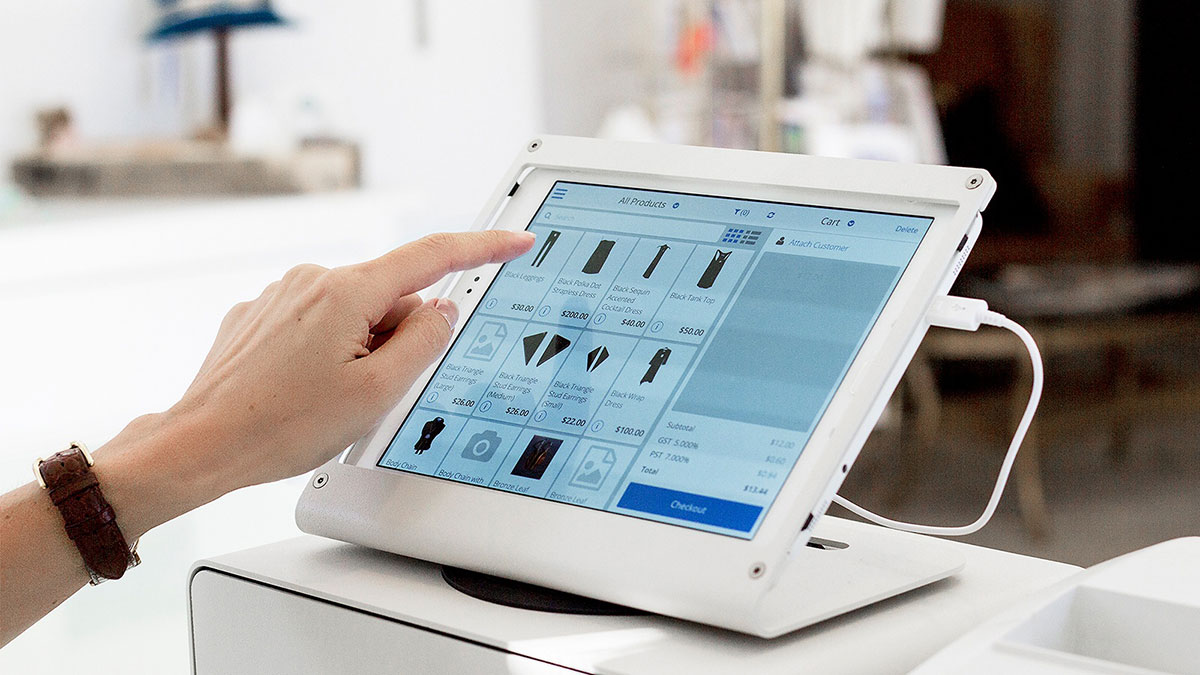Introduction
A Point of Sale (POS) system is an essential tool for businesses in the modern era. It streamlines sales transactions, manages inventory, tracks customer data, and provides valuable insights to help businesses make informed decisions. One popular POS system that has gained traction in the industry is the Toast POS system.
Toast is a cloud-based POS system specifically designed for the restaurant industry. It offers a range of features and functionalities to help restaurants improve efficiency, increase revenue, and deliver exceptional customer experiences. However, when considering implementing a Toast POS system, one crucial factor that comes into play is the cost.
The cost of a Toast POS system is influenced by various factors, including hardware, software, licensing, training, and ongoing support. It’s essential to understand these components to make an informed decision and budget accordingly.
In this article, we will delve into the different factors that affect the cost of a Toast POS system, providing you with valuable insights to help you assess the financial implications and plan for a successful implementation.
Factors Affecting the Cost of a Toast POS System
The cost of a Toast POS system can vary depending on several factors that contribute to the overall expense. Having a clear understanding of these factors is crucial to accurately budget for implementing and maintaining a Toast POS system for your restaurant. Let’s explore the key factors that influence the cost:
a) Size and Complexity of Your Restaurant: The size and complexity of your restaurant play a significant role in determining the cost of a Toast POS system. Larger restaurants with multiple locations, an extensive menu, and complex operations may require additional hardware, software features, and customization, leading to higher costs.
b) Number of POS Terminals: The number of POS terminals you need will impact the cost. Each terminal requires specific hardware components such as tablets, cash registers, printers, and card readers. The more terminals you have, the higher the hardware costs will be.
c) Integration with Other Systems: If you require integration with other systems like accounting software, online ordering platforms, or payment gateways, additional costs may be incurred for integration services or third-party software.
d) Payment Processing Rates: Toast offers its payment processing services, but fees associated with processing transactions can vary. It’s important to compare payment processing rates to ensure you’re getting the best deal for your business.
e) Level of Customization and Add-Ons: Toast POS systems offer a range of customization options and add-ons to cater to specific restaurant needs. Custom-built features and additional add-ons can significantly impact the cost.
f) Contract Length: The length of your contract with Toast will impact the cost as well. Longer contracts may provide discounts or more affordable pricing structures compared to month-to-month agreements.
g) Additional Services and Support: Toast offers various services and support options, such as training, onboarding, 24/7 customer support, and software updates. However, some of these services may incur additional costs, so it’s vital to factor them into your budget.
By considering these factors, you can make an informed decision about the total cost of implementing and maintaining a Toast POS system for your restaurant. In the next sections, we will dive deeper into the specific costs associated with different components of a Toast POS system.
Hardware Costs
When implementing a Toast POS system, one of the significant costs you need to consider is the hardware required to run the system effectively. Here are some key factors that impact the hardware costs:
a) POS Terminals: The POS terminals are at the core of your Toast POS system. The number of terminals you require for your restaurant will directly influence the hardware costs. Each terminal typically consists of a tablet or touchscreen device, cash register, printer, and card reader.
b) Networking Equipment: Depending on the size and layout of your restaurant, you may need additional networking equipment like routers, switches, and access points to ensure a stable and secure connection between the POS terminals and the backend system.
c) Kitchen Display Systems (KDS): Toast also offers Kitchen Display Systems that allow seamless communication between the front-of-house staff and the kitchen. If you opt for KDS, you will need additional hardware such as display screens or monitors in the kitchen area.
d) Peripherals: Certain peripherals enhance the functionality of your POS system. These may include printers for receipts and order tickets, cash drawers, barcode scanners, and customer-facing displays. The need for these peripherals depends on your specific requirements and the nature of your restaurant operations.
It’s important to note that the actual hardware costs can vary depending on factors such as the brand, quality, and specific configurations you choose. However, a general estimate for the hardware component of implementing a Toast POS system can range from a few thousand dollars to several thousand dollars, depending on the size and complexity of your restaurant.
Before making any hardware purchases, it’s advisable to consult with a Toast representative or a qualified expert who can assess your specific needs and provide accurate cost estimates. Additionally, Toast may offer leasing options or financing plans to help mitigate the upfront hardware costs and distribute them over a period of time.
In the next section, we will delve into the software costs associated with a Toast POS system.
Software Costs
Software costs are another important factor to consider when budgeting for a Toast POS system implementation. The software component of the system includes the core POS software, along with the various features and functionalities offered by Toast. Let’s explore the key considerations regarding software costs:
a) Core POS Software: The core POS software is the foundation of the Toast system. It encompasses essential features such as order processing, menu management, and reporting. The cost of the core software is typically charged on a per-terminal basis or a monthly subscription fee.
b) Additional Features and Modules: Toast offers a wide range of additional features and modules that can enhance your restaurant operations. These may include online ordering, loyalty programs, inventory management, and customer analytics. Each additional feature or module may come at an extra cost, so it’s important to evaluate your specific needs and budget accordingly.
c) Software Updates and Upgrades: Toast regularly releases software updates to improve functionality, security, and performance. Depending on your contract and support arrangements, software updates and upgrades may be included in your subscription fee or may incur additional charges.
d) Licensing and Subscription Fees: In addition to the software costs mentioned above, you will also have licensing and subscription fees associated with using the Toast POS system. These fees can vary based on factors such as the number of terminals, the duration of the contract, and the specific software features and add-ons you choose.
It’s important to carefully review the pricing structure and terms provided by Toast to ensure you have a clear understanding of the software costs involved. Take the time to assess which features and modules are essential for your restaurant’s operations and prioritize them within your budget.
Keep in mind that software costs are typically recurring expenses, which means you’ll need to budget for them on an ongoing basis. However, the investment in a robust POS software like Toast can yield significant benefits in terms of improved efficiency, accuracy, and customer satisfaction.
In the following sections, we will explore additional costs associated with a Toast POS system, including licensing and subscription fees, training and support costs, installation and setup costs, maintenance and upkeep expenses, and other important considerations for budgeting.
Licensing and Subscription Fees
When implementing a Toast POS system, you will incur licensing and subscription fees as part of the ongoing costs. These fees enable you to utilize the Toast software and access the various features and services provided. Let’s explore the key aspects of licensing and subscription fees:
a) License Fee: The license fee is the cost associated with obtaining the right to use the Toast POS system. It is usually a one-time payment made at the beginning of your contract. The license fee may vary based on factors such as the number of terminals and the specific features you require.
b) Subscription Fee: In addition to the license fee, a subscription fee is charged by Toast on a regular basis. This fee covers ongoing access to the software, updates, and support services. The subscription fee is typically billed monthly or annually, depending on the terms of your contract.
c) Tiered Pricing: Toast offers tiered pricing plans to accommodate different business sizes and needs. These plans vary in terms of features, support levels, and pricing. You can choose the plan that best aligns with your business requirements and budget.
d) Add-On Costs: While the base licensing and subscription fees cover the core features of the POS system, additional add-ons and modules may incur extra costs. Features such as online ordering, loyalty programs, and advanced reporting may require additional fees to enable their utilization.
It’s important to review the licensing and subscription fees carefully to ensure they fit within your budget. Consider factors such as the number of terminals, required features, and the length of the contract when assessing the overall cost of licensing and subscription fees.
It’s worth noting that Toast regularly updates its pricing plans and offers promotions, so it’s advisable to consult with a Toast representative to get the most up-to-date information on licensing and subscription fees.
In the subsequent sections, we will explore other costs to consider when budgeting for a Toast POS system, including training and support costs, installation and setup costs, maintenance and upkeep expenses, and other important considerations to ensure a successful implementation.
Additional Features and Add-Ons
One of the advantages of the Toast POS system is its ability to offer additional features and add-ons that can enhance the functionality of your restaurant operations. However, it’s important to consider the associated costs of these features when budgeting for a Toast POS system implementation. Here are some key points to consider:
a) Online Ordering: Toast provides an online ordering feature that allows customers to place orders directly through your restaurant’s website or mobile app. However, there may be additional costs associated with setting up and integrating the online ordering platform with your POS system.
b) Loyalty Programs: Implementing a customer loyalty program can be a valuable tool for retaining customers and fostering repeat business. Toast offers a loyalty program feature, but it may come with additional costs, such as setup fees and ongoing maintenance fees.
c) Advanced Reporting and Analytics: Toast offers robust reporting and analytics capabilities to help you gain insights into your business performance. However, certain advanced reporting features may be considered add-ons and may incur additional costs beyond the core subscription fee.
d) Integrations with Third-Party Platforms: If you require integrations with other platforms, such as accounting software, inventory management systems, or delivery platforms, additional costs may be involved. Third-party integrations may require custom development work or licensing fees.
e) Customized Features: In some cases, you may require specific features or customizations to align with your unique business needs. Toast offers the ability to build custom features or functionalities, but these customizations may come with additional development costs.
It is crucial to carefully evaluate the necessity and potential return on investment of these additional features and add-ons. While they can enhance your operations and customer experience, they may also increase the overall cost of implementing a Toast POS system.
Prioritize the features and add-ons that are most critical to your restaurant’s success and consider the long-term benefits they can bring. Collaborating closely with a Toast representative or an implementation partner can help you make informed decisions about which additional features are worth the investment.
In the following sections, we will discuss the costs associated with training and support, installation and setup, and maintenance and upkeep, to provide a comprehensive understanding of the financial considerations when implementing a Toast POS system.
Training and Support Costs
Implementing a new POS system like Toast requires proper training and ongoing support to ensure a smooth transition and efficient use of the system. Here are some key points to consider regarding training and support costs:
a) Onboarding and Training: Toast offers onboarding programs and training sessions to help your staff familiarize themselves with the POS system. While basic training may be included in your subscription fee, additional costs may be incurred for more in-depth or specialized training sessions tailored to your restaurant’s specific needs.
b) Staff Turnover: Consider the potential impact of staff turnover on training costs. If you have a high turnover rate or frequently hire new staff members, recurring training may be necessary, adding to your overall training expenses.
c) Ongoing Support: Toast provides customer support services to address any technical issues or troubleshooting needs that may arise. Depending on your contract, support services may be included in your subscription fee or require additional fees for more comprehensive support levels.
d) Upgrades and Software Updates: As Toast releases software upgrades and updates, it’s essential to consider the associated training costs. When new features or changes are introduced, your staff may require additional training to ensure they are well-versed in utilizing the updated software effectively.
Estimating training and support costs can depend on factors such as the size of your staff, the complexity of your operations, and the level of support you require. It’s recommended to consult with a Toast representative to get a clear understanding of the training and support offerings and associated costs.
Remember that investing in thorough training and reliable support is crucial for your team’s adoption of the system and maximizing the benefits of your Toast POS system implementation.
In the upcoming sections, we will discuss installation and setup costs, maintenance and upkeep expenses, and other important considerations when budgeting for a Toast POS system.
Installation and Setup Costs
When implementing a Toast POS system, there are costs associated with the installation and setup process to ensure the system is properly configured and integrated into your restaurant operations. Here are some key considerations regarding installation and setup costs:
a) Hardware Installation: Depending on the complexity of your restaurant setup and the number of POS terminals, you may need assistance with the physical installation and setup of the hardware. This can involve mounting tablets, connecting peripherals, and configuring the network infrastructure. It’s important to factor in the cost of professional installation if needed.
b) Software Configuration: The software configuration involves customizing the Toast POS system to meet the specific needs of your restaurant. This process includes setting up the menu, inputting pricing, configuring user roles and permissions, and integrating any necessary third-party platforms. The complexity and level of customization required will impact the time and cost associated with the software configuration.
c) Data migration: If you are transitioning from an existing POS system to Toast, you may have data that needs to be migrated. This can include menu items, customer profiles, and sales history. Data migration can be a time-consuming process and may incur additional costs depending on the amount and complexity of data being migrated.
d) System Testing and Training: Before going live with the Toast POS system, thorough testing is necessary to ensure everything is functioning correctly. This includes testing various scenarios, such as processing orders, making payments, and generating reports. Additionally, providing training to your staff on using the system effectively may require some time and resources.
It’s important to work closely with a Toast representative or an implementation partner to understand the specific requirements and costs associated with installation and setup. They can provide guidance on the optimal setup process and offer insights into any potential challenges or additional expenses that may arise.
Proper installation and setup are crucial for a successful POS implementation and can save you valuable time and resources in the long run. By accounting for these costs in your budget, you can ensure a smooth transition and maximize the benefits of your Toast POS system.
In the following sections, we will discuss maintenance and upkeep expenses, as well as other important considerations to factor into your budget when implementing a Toast POS system.
Maintenance and Upkeep Expenses
Maintenance and upkeep expenses are an important consideration when budgeting for a Toast POS system. These costs ensure the system’s smooth operation and address any potential issues that may arise. Here are key points to consider regarding maintenance and upkeep expenses:
a) Software Updates: Toast regularly releases software updates to improve functionality, security, and address any bugs or issues. Staying up to date with the latest software versions is crucial to ensuring optimal performance and compatibility. While some updates may be included in your subscription fee, additional costs may apply for major upgrades or specialized support during the update process.
b) Technical Support: Toast provides technical support services to address any technical issues or questions that may arise. Depending on your support plan, technical support may be included in your subscription fee, or additional fees may apply for higher levels of support or after-hours assistance.
c) Hardware Maintenance: It’s important to consider the ongoing maintenance and repair costs for the hardware components of your Toast POS system. This can include repairs or replacements for damaged or faulty tablets, printers, cash registers, and other peripherals. It’s recommended to work with reputable vendors or consider service agreements that cover hardware maintenance to mitigate unexpected expenses.
d) Data Backup and Security: Regular data backups and maintaining a secure environment are critical to protecting your restaurant’s data and preventing valuable information from being lost or compromised. Consider any costs associated with data backup solutions, network security measures, and compliance-related expenses.
By budgeting for regular maintenance and upkeep expenses, you can ensure the longevity and reliability of your Toast POS system. It’s also advisable to allocate a portion of your budget for any unforeseen maintenance or repair needs that may arise during the lifespan of your system.
Working closely with a Toast representative or an implementation partner can provide insights into the best practices for system maintenance, vendor relationships, and cost-saving strategies.
In the next section, we will discuss other important considerations when budgeting for a Toast POS system, including hardware upgrades, future scalability, and ongoing operational costs.
Other Considerations when Budgeting for a Toast POS System
When budgeting for a Toast POS system, there are several additional factors and considerations to keep in mind. These factors can impact the overall cost and success of your implementation. Here are some key points to consider:
a) Hardware Upgrades: Technology is constantly evolving, and hardware components can become outdated over time. It’s important to factor in the potential need for hardware upgrades or replacements in the future to ensure your POS system stays current and meets the growing demands of your restaurant.
b) Future Scalability: Consider the potential for future expansion or changes in your restaurant operations. Can the Toast POS system accommodate the growth of your business? Factor in the cost of upgrading licensing, adding additional terminals, and implementing new features or modules as your business evolves.
c) Ongoing Operational Costs: In addition to the upfront costs, it’s important to consider the ongoing operational costs of running a POS system. This includes recurring fees such as licensing and subscription fees, payment processing fees, internet and connectivity charges, and any other costs associated with the day-to-day operation of the system.
d) Training and Staff Efficiency: Proper training and ongoing staff education are essential for maximizing the efficiency and productivity of your POS system. Consider allocating a budget for continuous training to ensure your staff is well-equipped to utilize the system effectively and take advantage of its full capabilities.
e) Return on Investment (ROI): Evaluate the potential return on investment of implementing a Toast POS system. Will the system help increase efficiency, reduce errors or labor costs, and improve the overall customer experience? Consider how the benefits of the system align with the costs incurred and assess the long-term value it can bring to your business.
By taking these factors into account, you can develop a comprehensive budget that takes into consideration the initial implementation costs as well as the ongoing expenses and long-term sustainability of your Toast POS system.
Collaborating closely with a Toast representative or an implementation partner and conducting a thorough cost analysis will provide valuable insights into the various financial implications of implementing a Toast POS system for your restaurant.
While budgeting is essential, also keep in mind that the investment in a robust and feature-rich POS system like Toast can have significant benefits in terms of operational efficiency, improved customer satisfaction, and business growth.
Conclusion
Implementing a Toast POS system for your restaurant involves careful consideration of the costs involved in various aspects of the system. By understanding the factors that affect the cost, you can create a comprehensive budget and make informed decisions about which features and services align with your business goals and budgetary constraints.
Factors such as hardware costs, software costs, licensing and subscription fees, additional features and add-ons, training and support costs, installation and setup costs, maintenance and upkeep expenses, and other considerations all play a role in determining the total cost of implementing and maintaining a Toast POS system.
When budgeting, it’s crucial to forecast not only the upfront expenses but also the recurring costs and ongoing operational expenses. Additionally, consider the potential return on investment your restaurant can achieve by leveraging the benefits of a reliable and feature-rich POS system like Toast.
Working closely with a Toast representative or an implementation partner can provide guidance throughout the budgeting process. They can help you understand the specific costs associated with your unique business requirements and offer insights into cost-saving strategies or financing options.
Remember, your budget should not only account for the immediate implementation costs but also consider the long-term sustainability and growth potential of your restaurant. With proper planning and budgeting, implementing a Toast POS system can revolutionize your restaurant operations, enhance efficiency, and provide exceptional experiences for your customers.
Take the time to thoroughly analyze the costs, evaluate your options, and make an informed decision that aligns with your restaurant’s needs and financial goals. Investing in a Toast POS system can be a crucial step towards achieving success and staying competitive in the ever-evolving restaurant industry.







